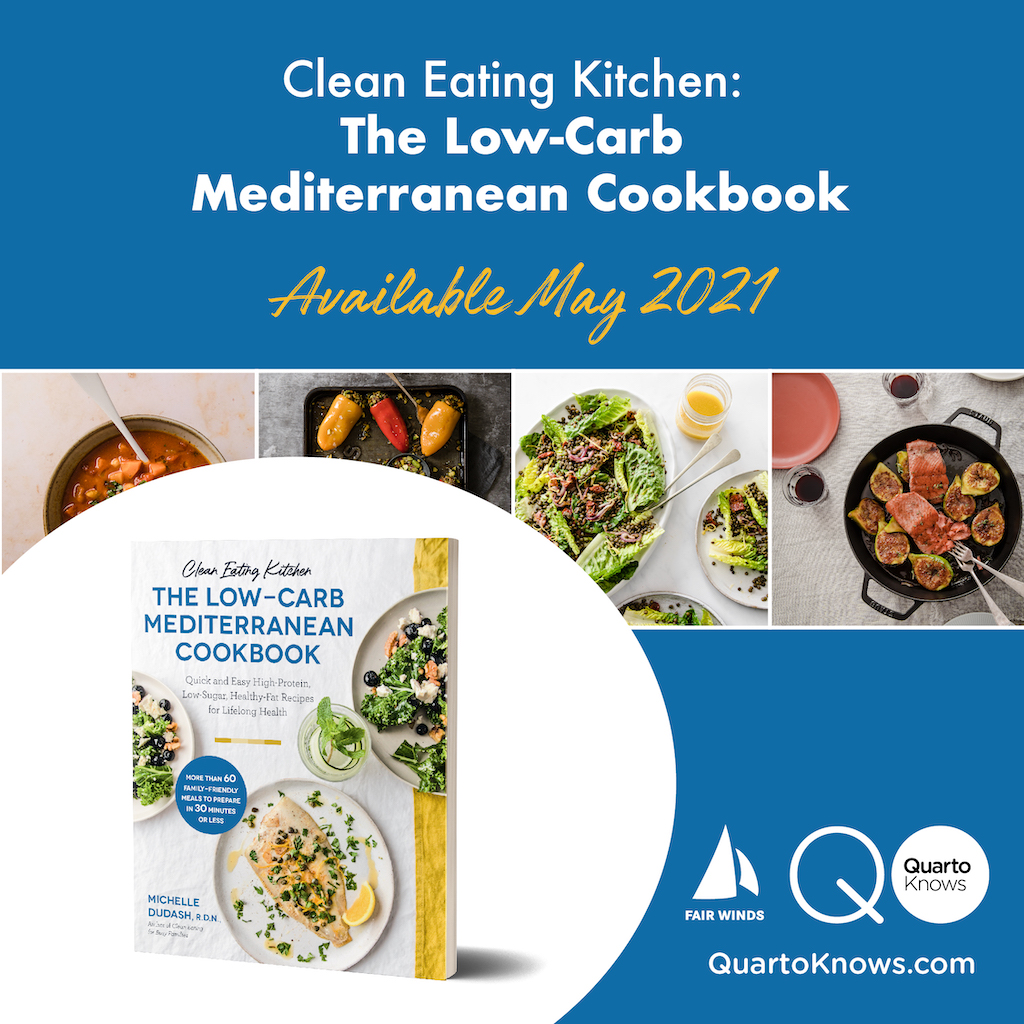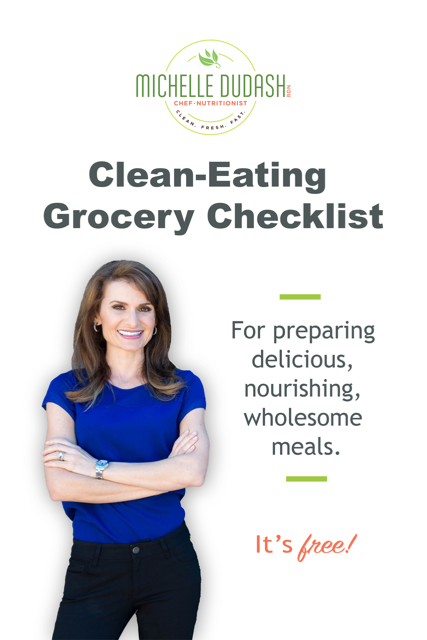New Dietary Guidelines for Americans, 2010: The nutritional law of the land

 by Michelle Dudash, RD. This article was originally published in the March 2011 issue of The Frontburner, an e-newsletter of the International Association of Culinary Professionals. Posted with permission.
by Michelle Dudash, RD. This article was originally published in the March 2011 issue of The Frontburner, an e-newsletter of the International Association of Culinary Professionals. Posted with permission.
A notice from the Fed can make anyone uneasy. On January 31, 2011, the United States Department of Agriculture, in conjunction with the Department of Health and Human Services, issued the Dietary Guidelines for Americans 2010, a notice that captured the attention of the food industry, health community, and consumers.
“The Dietary Guidelines are federal nutrition policy and provide the latest evidence-based nutritional advice. Federally-funded programs, such as school meal programs, by law must meet these guidelines,” says Jean Davis, USDA spokesperson. They also shape nutritional advice and educational materials given by health professionals. The 2010 Guidelines stem from a panel of scientific experts who reviewed and analyzed the most current scientific information. Revisions are issued every five years and 2010 marks the seventh edition.
“The Guidelines may seem trivial, but they govern the content of school meal and food assistance programs worth billions of dollars a year,” says Marion Nestle, Paulette Goddard professor of nutrition, food studies, and public health at New York University and author of Food Politics and What to Eat. “The Guidelines shape the premise of the U.S. Food Guide, known most recently as the MyPyramid of 2005.” This is the visual that consumers see.
The Guidelines, however, are about much more than healthy eating. “Food is a business worth more than a trillion dollars a year. It is a hugely competitive business because food is so overabundant—3,900 calories a day for every person in the country. All food industries want the government to help them sell more products, not less,” Nestle says.
The Guidelines influence the messages of marketers, chefs, writers, publishers, media, culinary educators, and even those in the hospitality industry. This 95-page document bursts with information intended for translation by health professionals. These 10 rules capture the essence of what we need to know to help navigate the current nutritional landscape.
1. Balance calories in with calories out to prevent weight gain.
For the first time, the Guidelines address a portly population, with two-thirds of American adults and one-third of children overweight, exposing them to an increased risk of potentially deadly heart disease, type 2 diabetes, and certain cancers, to name a few. “Obesity is the overriding public health nutrition problem that guidelines must address,” Nestle says. “To reduce obesity and not gain weight, people must eat less, move more, or do both.” Despite the latest fads promoting a low-carb, high-protein diet, the Guidelines state that strong evidence shows no proof that a certain range of carbohydrates, protein, and fats can assist with weight loss.
2. Choose nutrient-rich foods, which offer more necessary nutrients instead of empty calories.
Body mass isn’t the only health indicator. The nutrient-richness of a food is the amount of healthy nutrients in relation to the number of calories it offers. As a country with so many calories available to us in a single day, we remain over-fed but undernourished. The top four nutrients of concern for both adults and children are potassium, dietary fiber, calcium, and vitamin D. Melissa Musiker, RD, with the Grocery Manufacturer’s Association advises, “We try to remind people to be mindful of what they’re eating and be an informed consumer. The challenge is to contextualize the numbers that they see. It’s not that the amount of any one nutrient fits, it’s important that people understand how a food fits into the overall context of their total diet.”
3. Enjoy food, but not too much of it. Keep portion sizes in check.
If only it were that simple. Nestle says that the “eat less” message is extremely controversial. “Eating less is very, very bad for business. Any time the agencies suggest eating less of something, political hell breaks loose. That is why the ‘eat less’ messages refer to nutrients, not foods.” Nestle examines the influence, through campaign funding, that some corporations exert on nutrition policy in her blog, Food Politics.
For the average person consuming a 2000-calorie-a-day diet, the appropriate serving sizes are typically smaller than restaurant portions. One serving of starchy foods or fruits is the size of a tennis ball. A serving of non-starchy vegetables is a fist-size amount, or more, in one sitting. The top part of the thumb represents a reasonable dollop of sauce or condiment. A CD case compares well to an appropriately sized pancake, waffle, or slice of bread. A meat serving is the size of a deck of cards.
4. Eat more fruits and vegetables by filling half of the plate with them.
The beauty of minimally processed fruits and vegetables is that they offer few calories but lots of important nutrients, such as fiber which helps keeps us full and satisfied longer. The Guidelines advise that if meat currently takes center stage on the plate, to gradually increase the amount of vegetables while shrinking the meat serving. When making stir-fries and other combination dishes, decrease oversized protein and rice portions, and double the amount of vegetables.
5. Get some protein from seafood, nuts, seeds, and soy. Limit intake of foods higher in solid fat.
This recommendation is aimed at increasing the nutrients Americans lack and decreasing excess saturated fat, cholesterol, and calories. This may be the closest that the Guidelines have ever come to suggesting eating less meat while increasing intake of seafood and plant-based protein. This boils down to eating 8 ounces of seafood a week and shooting for 4 ounces per week of nuts, seeds, and soy, which are the equivalents of 1 cup shelled pistachios, 1/2 cup natural peanut butter, or 3/4 cup cooked soybeans.
Solid fat includes the saturated fat found in common protein-rich foods such as fattier cuts of meat, pork products, pizza, and regular cheese. Interestingly, though, according to the 2003-2004 National Health and Nutritional Examination Survey, the major source of solid fats in the diets of the U.S. population ages 2 years and older is cakes, cookies, donuts, pies, cobblers, and granola bars. These foods can contain ingredients like butter, cream, whole milk, and shortening.
Beef and beef mixed dishes top the list as the specific food contributing the most solid fat. But all beef is not created equal. “Lean beef is a real-life, nutrient dense solution that helps people meet the Dietary Guidelines, and is a leading source of several nutrients including protein, iron and zinc,” according to Shalene McNeill, PhD, RD from the National Cattlemen’s Beef Association.
Trans fat is the other solid fat found in many highly processed foods like stick margarine and fast food, and naturally in miniscule amounts in animal products. The Guidelines recommend that healthy people limit saturated fat to 10% of total calories, which for a 2,000-calorie-a-day diet equates to 22 grams a day. If that sounds generous, consider this. A quarter pound cheeseburger value meal with a medium order of fries weighs in at 16.5 grams of saturated fat, plus 1.5 grams of trans fat.
Beans, peas, and lentils serve as another excellent and economical source of protein, especially for vegetarians or those looking to cut back on saturated fat and cholesterol, while boosting intake of fiber, a nutrient not available naturally in animal products.
6. Eat less sodium.
While sodium intake doesn’t directly impact obesity, it contributes to the large number of cases of stroke, kidney disease, and high blood pressure. The 2,300 milligram limit remains the same in the 2010 Guidelines for healthy low risk individuals. The previous 1,500 milligram limit for individuals with hypertension, African Americans, middle-aged and older adults, is extended to those with diabetes or chronic kidney disease. In total, this group comprises about half of the U.S. population including children, and the majority of adults.
Foods as they occur in nature—fruits, vegetables, whole grains, nuts, milk, meat and poultry that haven’t been injected with high sodium broths—tend to be low-sodium foods. As for packaged foods, it boils down to reading the labels. A food containing 140 milligrams of sodium or less per serving qualifies as a low sodium food. Musiker of the Grocery Manufacturer’s Association, reminds us that the term “highly processed” is very subjective and can be taken out of context. “Non-fat lactose free does not come out of the cow that way. There is a lot of processing that occurs, however it is a food that is clearly encouraged in the Guidelines.”
Potassium is the other side of the sodium equation. The average American consumes about 50% more sodium than the recommended daily limit, but only half of the recommended amount of potassium. These electrolytes must work together to maintain the proper balance, since adequate potassium helps the body excrete excess sodium. Good sources of potassium include fruits, vegetables (especially legumes), yogurt, and certain seafood.
Restaurant fare is another major sodium source. Natalia Hancock, RD, a culinary nutritionist for the Michelin one-star rated Rouge Tomate in New York City advises, “There needs to be a lot more scratch cooking. Our chefs try to add the salt at the end, which complements the true flavor of whatever they’re cooking. And, I ask the chefs to balance high salt ingredients with high potassium ingredients like leafy greens, kiwifruit, and sweet potatoes.” And chefs, take notice. Rouge Tomate follows a stealth health approach, meaning that while they have internal nutritional standards in place, they don’t market it in an in-your-face manner. The customers seem to like it that way.
7. Eat whole grains instead of refined grains.
This message remains the same as the 2005 Guidelines, which is to make sure at least half of grains are whole grains. A whole grain is one that retains both the outer bran and germ in addition to the white endosperm, giving it more fiber, protein, iron, and B vitamins. Eating single foods such as oatmeal, quinoa, brown rice, bulgur and other whole grains is the optimal form. Versions of processed foods such as bread, tortillas, pasta, and crackers, are available made from 100% whole grain flours. Packaged foods bearing the claim “made with whole grains” may only contain half of a whole grain serving, but they can still add up throughout the course of the day.
At Rouge Tomate, the chefs incorporate up to one-third of the flour as whole grain in pasta recipes. Sometimes they substitute farro for the carnaroli rice. A person eating 2,000 calories a day should get at least three whole grain servings which could be met by 1/2 cup of cooked oatmeal, a 1 ounce slice of 100% whole grain bread, and 1/2 cup of brown rice.
8. Drink more water, fewer sugary drinks. Switch to fat-free or low-fat milk.
Many sugary drinks add only empty calories while white milk and 100% fruit juice contain sugar naturally and provide a good nutrient return for the calorie investment. Portion size should be considered even for 100% fruit juice, since calories can add up quickly, and people should still get most of their fruit from whole forms. Regular soda, fruity drinks, energy drinks, and sports drinks mostly contain added sugar with few beneficial nutrients. Diet sodas are not addressed in the Guidelines. Low-fat milk constitutes a better choice to help decrease the intake of calories to encourage weight loss, keep saturated fat at bay, and increase intake of the key nutrients people are missing. For those who choose to avoid dairy, fortified soy beverage or rice beverage provide similar benefits.
For people who already drink alcohol, the recommendations remain at a limit of one drink per day for women, and two drinks for men.
9. Select the eating pattern that is right for you.
Previous versions of the Guidelines showcased meal plans including the U.S. Food Guide and the DASH diet, which is the National Institute of Health’s plan for lowering blood pressure. What’s new in the 2010 edition is that it has added clear adaptations for lacto-ovo vegetarians and vegans. These patterns are what will determine the design and content of the consumer-friendlier U.S. Food Guide, which is slated to be released in a few months.
10. Get cooking.
The Guidelines state, “Empower individuals and families with improved nutrition literacy, gardening, and cooking skills to heighten enjoyment of preparing and consuming healthy foods.” Learning to cook or at least assemble nutritious ingredients is one of the first steps to eating a healthier, more balanced diet. When someone cooks at home they have control about what and how much is put on the plate.
“I firmly believe that the best single thing that people can do to improve their diets is to learn how to cook and understand how what they eat fits into our existing food system,” says Nestle. “There are many ways of conveying these messages and all are worth doing.”
It’s the real-life application that seems to be a missing link. Sally Squires, Director of Health and Wellness Communications at Powell Tate says, “Our in house market research group has found that most Americans don’t know the Dietary Guidelines. Congress mandates that the Dietary Guidelines get reviewed but they don’t allocate funding to disseminate the Guidelines. I think it will take some creative public-private partnerships to help spread the word.”
Squires thinks that the most important thing groups can do is be sure that their messages are grounded in science, and look to the leaders among nutrition professionals, including the Society for Nutrition Education, the American Society for Nutrition, the Obesity Society, the Institute of Food Technology, and the American Dietetic Association.
So which plans do the experts follow?
Hancock says that the key is starting with really good ingredients in their natural state and go seasonal whenever possible. Squires draws upon her graduate degree in nutrition for guidance but thinks you can still eat too much of healthy food. “Like almost everyone else, I have to look for ways to be more active and to eat less.” Nestle adheres to her own advice because it is easy to follow and flexible. “I eat less, move more, eat plenty of fruits and vegetables, don’t eat too much junk food, and enjoy every bite.”
We can probably all agree with that.
Michelle Dudash is a registered dietitian and consulting chef based in Phoenix. She has made hundreds of television appearances on shows such as Better and Fox and Friends and her recipes have been featured in Whole Living, Betty Crocker magazine, and Oxygen. She is currently working on her first cookbook called New Modern Moms. More information: MichelleDudash.com.

 I'm a chef nutritionist, not the food police. I eat cookies but make sure to eat my broccoli too.
I'm a chef nutritionist, not the food police. I eat cookies but make sure to eat my broccoli too.


11 Comments